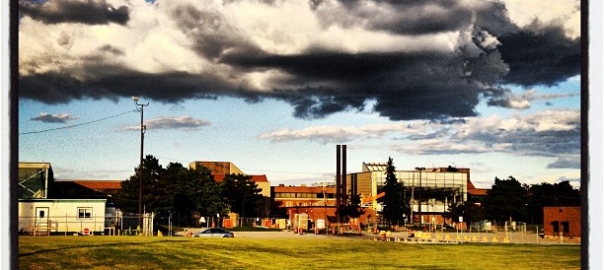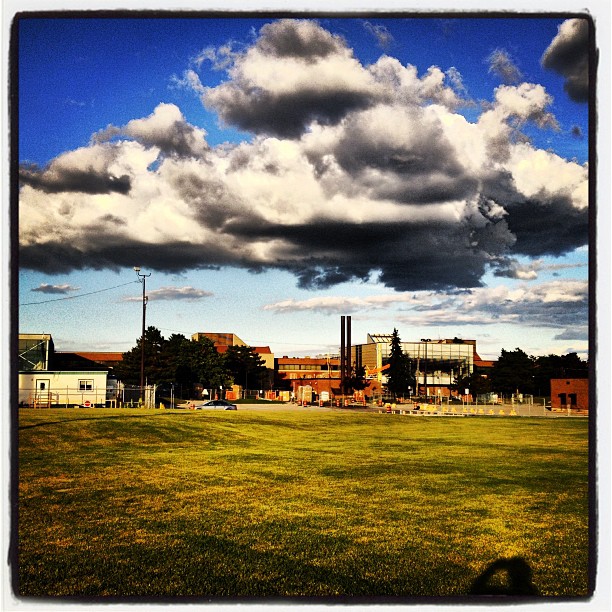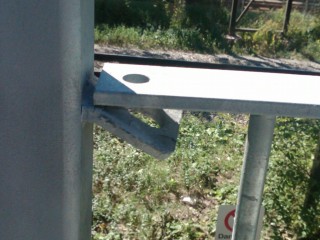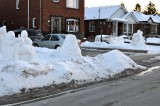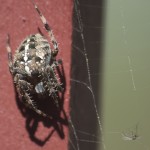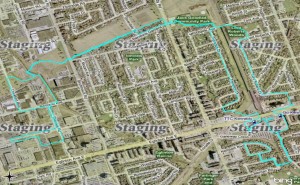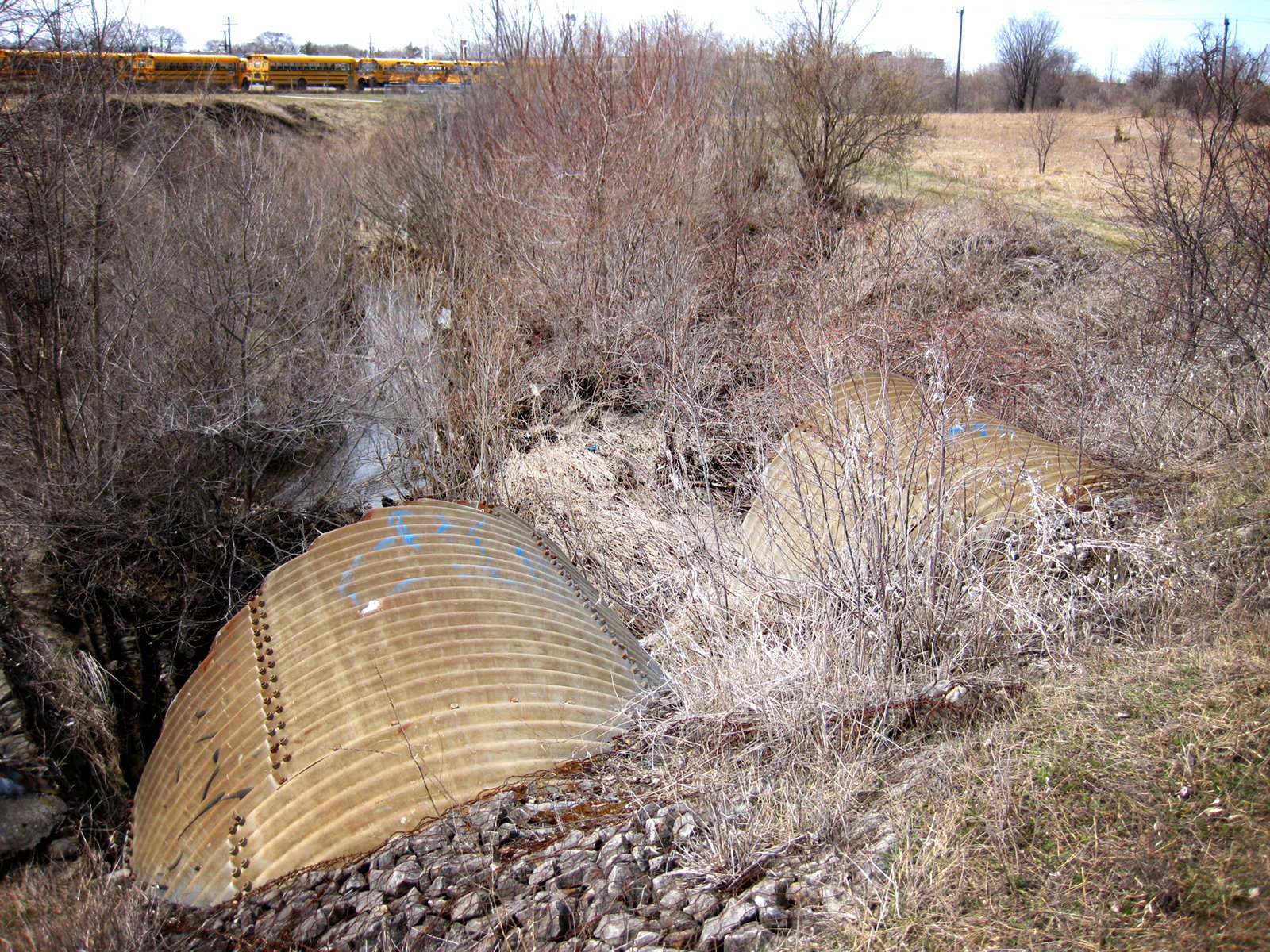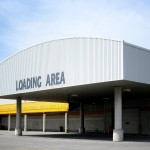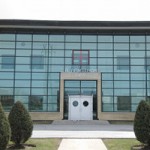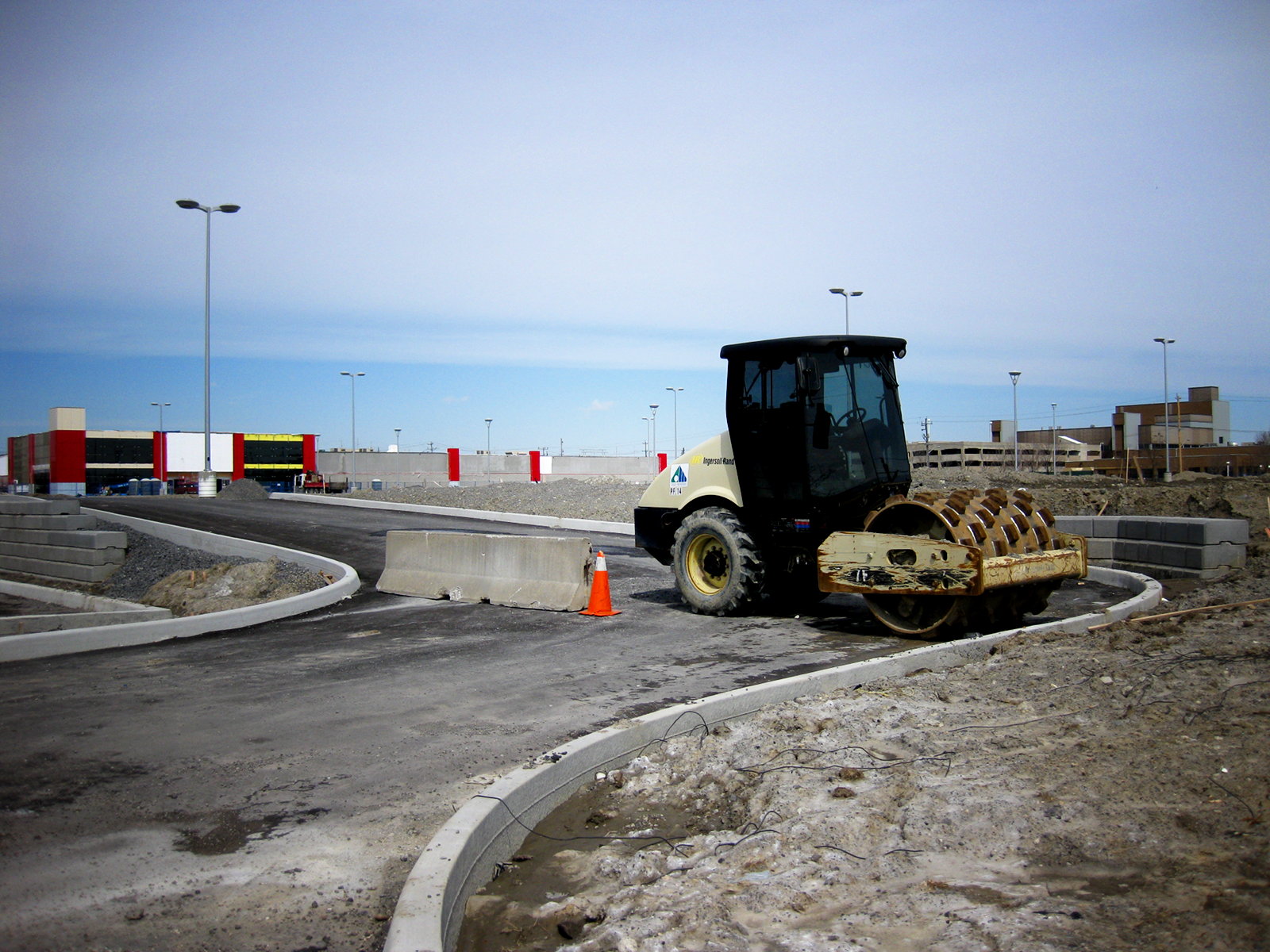Instagram filter used: Lo-fi (through Randolphs ☺)
Tag: scarborough
the happiest sound
That’s the rapid clatter of chopping up Kothu Roti at Amma at the end of our street. You know that tasty spicy food is imminent when you hear that sound. I’m really pleased that Amma’s back under the original management. The other proprietors just didn’t care as much about their food.
mockingbird
Very little urban hum this morning (holiday), and the air conditioners really hadn’t started yet, so please be amused by the sounds of the garden (featuring mostly mockingbird): about quarter to nine. It does a passable seagull and also a red-tailed hawk. The vehicle reversing sound, though, is real.
(at least I don’t have a mockingbird problem.)
VE3WE CW beacon
If you tune to 28.265 MHz, you might hear this: VE3WE CW Beacon. It’s only broadcasting at five watts, so if you’re really far, you might not hear it. The message it is transmitting is “SCARBOROUGH AMATEUR RADIO CLUB BEACON, REPORTS TO WWW.VE3WE.ORG 73″. It does this once a minute.
There’s a reports page: CW Beacon « Scarborough Amateur Radio Club. Although I basically live next door, I’ve sent mine in.
archival, snarkival
 We live in a Scarborough neighbourhood, so that means that people use the side door. Front door’s for people who know no better. So we need a Side Door sign to guide the unschooled.
We live in a Scarborough neighbourhood, so that means that people use the side door. Front door’s for people who know no better. So we need a Side Door sign to guide the unschooled.
On the left is one I just printed. The one on the right — same printer (HP Photosmart C5180), same paper — has been taped to the glass on our front-facing screen door since December 2007, in full sunlight. It’s barely legible. (And yes, it has slightly different fonts/layout; the original was done on a PC in OpenOffice, the replacement in LibreOffice on a Mac.)
So whenever an inkjet crows about “Archival Inks!”, remember: four years to fade to white. Do you need your images to last longer?
nice bike facilities
I’d seen that the city had been working on the path over the train tracks at Lord Roberts Wood, but hadn’t seen the completed project. What was formerly a real slog to lift a bike (and especially a sensible bike) up these steps now can be ridden without dismounting. Yay Toronto!
(apologies for picture quality. My Blackberry is in perma soft-focus)
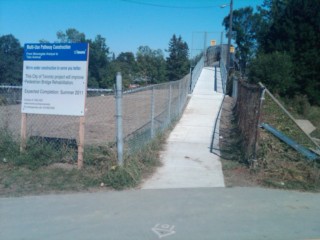
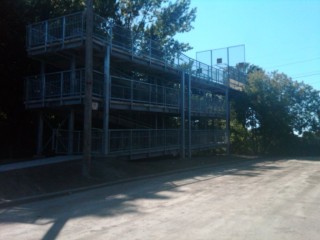 If you want to see how they looked last year, there are some automatic photos from my Canada Day post: sd790-20100701-161516, sd790-20100701-161535, and sd790-20100701-161614. A great improvement has been made.
If you want to see how they looked last year, there are some automatic photos from my Canada Day post: sd790-20100701-161516, sd790-20100701-161535, and sd790-20100701-161614. A great improvement has been made.
If I must kvetch (and I must: cyclo, ergo kvetch), the turns in the ramp are just a little too narrow to navigate a bike round. I can make most of them if I crawl round it, but I usually have to dab a foot down.
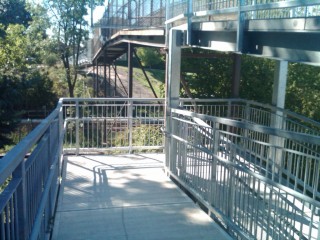 There’s also no lighting. I’m not sure how welcoming this facility would be to use at night. Also, some of the handrails look as if they should either be welded or bolted in place, but are neither. Some have half-hearted tack welds, but they look as if they were done straight onto the zinc galvanizing so were destined to end badly.
There’s also no lighting. I’m not sure how welcoming this facility would be to use at night. Also, some of the handrails look as if they should either be welded or bolted in place, but are neither. Some have half-hearted tack welds, but they look as if they were done straight onto the zinc galvanizing so were destined to end badly.
a shortt detour
MetaFilter‘s Ownâ„¢ TimTypeZed — aka Tim Shortt — is incredibly modest about his talents in person, but his artwork speaks for itself:

Tim’s my nearest neighbour on MetaFilter, and I’ve met him at a couple of meetups.
the white details on a white background are a bit hard to make out …
A house down the road does these very intricate snow sculptures:
now that’s a loaf
 Been discovering the joys of Poondy Bread, the nearby Sri Lankan bakery. Their bread is awesome, with a great egg crust and a challah-like sweetness.
Been discovering the joys of Poondy Bread, the nearby Sri Lankan bakery. Their bread is awesome, with a great egg crust and a challah-like sweetness.
But this loaf takes the cake. Two colossal slices. As big as your head.
Canada Day softball
On Canada Day, I rigged up my bicycle with a camera set to take a picture every 20 seconds, and a GPS to track my location. I had no control over when the camera would fire as I rode round the neighbourhood. Out of the 150+ photos it took, this one from Jack Goodlad park came out quite well:
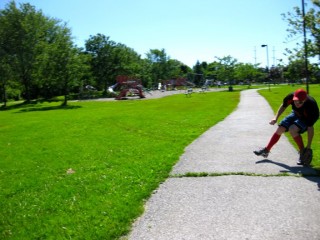 The rest of the pictures are here: My Neighbourhood, Canada Day 2010 « Numpty’s Progress
The rest of the pictures are here: My Neighbourhood, Canada Day 2010 « Numpty’s Progress
The Drones of Scarborough Superstore
I’ve mentioned the beautiful drone in the Loblaw Superstore before, but only last night did I actually get around to recording it:
- meats, fish – 2009/10/24 19:24:36
- chill – 2009/10/24 19:34:38
- ice cream – 2009/10/24 19:36:56
- organic dairy – 2009/10/24 19:40:52
- frozen veg – 2009/10/24 19:45:38
- ice cream 2 – 2009/10/24 19:52:04
You should probably listen through headphones or decent speakers – there’s some bass in there. If you can, try to experience it for yourself. The store is at 1775 Brimley Road, just south of the 401.
beautiful eye
I hope this gull is okay. It really needed water to drink, so I gave it some.
my, how you’ve grown!
We found tastiness at Makkal Chon
We went to Makkal Chon (1975 Lawrence Ave E, near Warden) and had truly amazing Korean food. It’s such an unassuming little place, but worth it. Kal bi frenzy!
quite spicy for scarborough

my beautiful neighbourhood
Here’s a bike ride around my neighbourhood rendered in QGIS using Bing Maps imagery via OnTerra Bing Maps WMS Service:
(via)
tree light
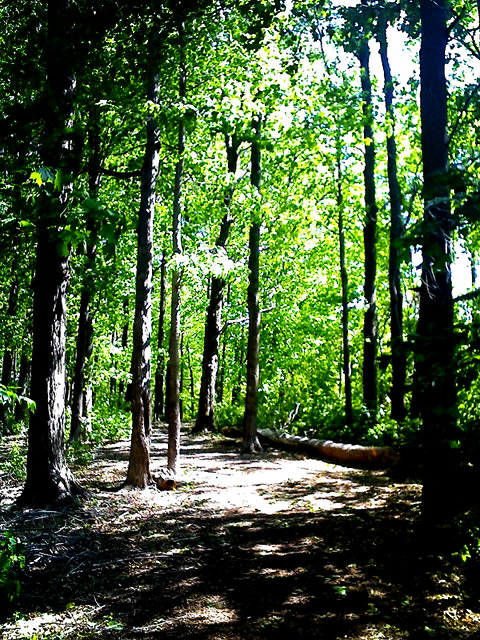
wildlife and environs
(the abandoned donut shop has quite a history)
I also saw and heard a woodpecker: local woodpecker.
bike, loader, snow
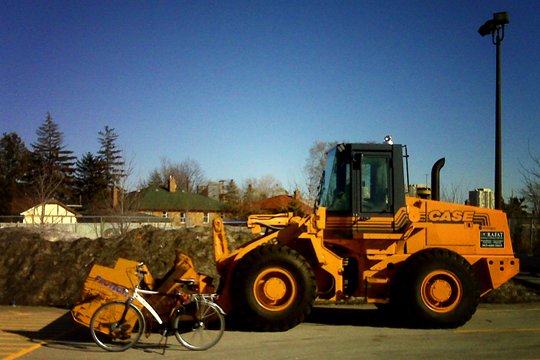
Someone was inexpertly practicing scales on a brass instrument nearby. The wind brought the smell of an early spring barbecue.
a little bit on the toronto offshore wind farm and the Hélimax study
Many people (such as 1, 2, 3, 4) cite the Hélimax study Analysis of Future Offshore Wind Farm Development in Ontario [PDF] as a good reason not to even measure wind speeds off the Toronto shoreline. I would be quite surprised if most commenters had read it, as it’s not a light read, but there are three basic reasons that the report doesn’t apply:
- The report is not prescriptive; it does not outline the only viable sites in the Great Lakes. Indeed, the very last paragraph of the executive summary says “… it should be emphasized that the sites … selected do not necessarily correspond to the projects currently being developed. This report by no means seeks to disparage any sites currently under development which are not part of the 64 sites selected. There are wind power projects that can be feasibly developed beyond the sites that are identified in the present study.” A statement like that leads me to believe that the report was intended for capacity planning, and not site selection.
- The report specifically excludes Lake Ontario around the GTA on population density, even though it notes “… utilities generally prefer to have power generation close to population centres” [p.10]. Simply put, if Toronto Hydro wishes to bring wind power into Toronto, it can either have local generation where everyone sees it, or remote generation with pylons that everyone can see. Pick one.
- The mesoscale modelling that the report relies upon is unproven offshore: “… the accuracy of mean wind speeds derived from onshore mesomaps is generally assumed to be ±7%, the precision of such maps for offshore applications is not well known” [p.4]. ±7% for a mean wind speed means a lot more than seven percent in energy yield – that’s roughly good enough to tell you where you might want to start doing site selection. Indeed, the report confirms this: “… on-site meteorological measurements are required to perform a truly judicious assessment of the local wind resource and ensuing energy yields of a given site”.
So that about wraps it up for the Hélimax study pertaining to Toronto.
Others have commented that the low capacity factors of the Pickering and ExPlace turbines. Despite that fact that capacity factors for a given site are highly machine specific, there are some issues here too:
- Both sites are near large buildings which disrupt air flow. This issue goes away even a moderate distance offshore.
- Both sites are really demonstrators, and positioned for maximum public exposure rather than generation.
- The Pickering Vestas V80 was a very early model of its type, and needed a lot of TLC to get operating. I wouldn’t call it quite a prototype, but it’s not far off.
- The Pickering turbine is designed for windy (Class I) sites. It has shorter blades (80m diameter) and a bigger generator (1.8MW) than the turbines I’m most familiar with (82m diameter, 1.65MW). It will catch less wind and thus drive the generator less hard (quick, you come up with a better analogy for capacity factor … I couldn’t) than a Class II or III machine.
- The Explace turbine has smaller blades than it was supposed to – the supplier ceased trading before they were able to replace the interim 52m blade set with 58m ones. As the tower was designed for longer blades, the turbine can never be run at full speed or full generation.
- Due to the closure of Lagerwey, the ExPlace turbine has never had what I’d class as an industry-standard maintenance contract. The joint venture of TH and WindShare volunteers directs the maintenance, but there’s no permanent crew like a commercial operation would have.
So put that lidar out in the lake, and let’s see what we’ve got.
